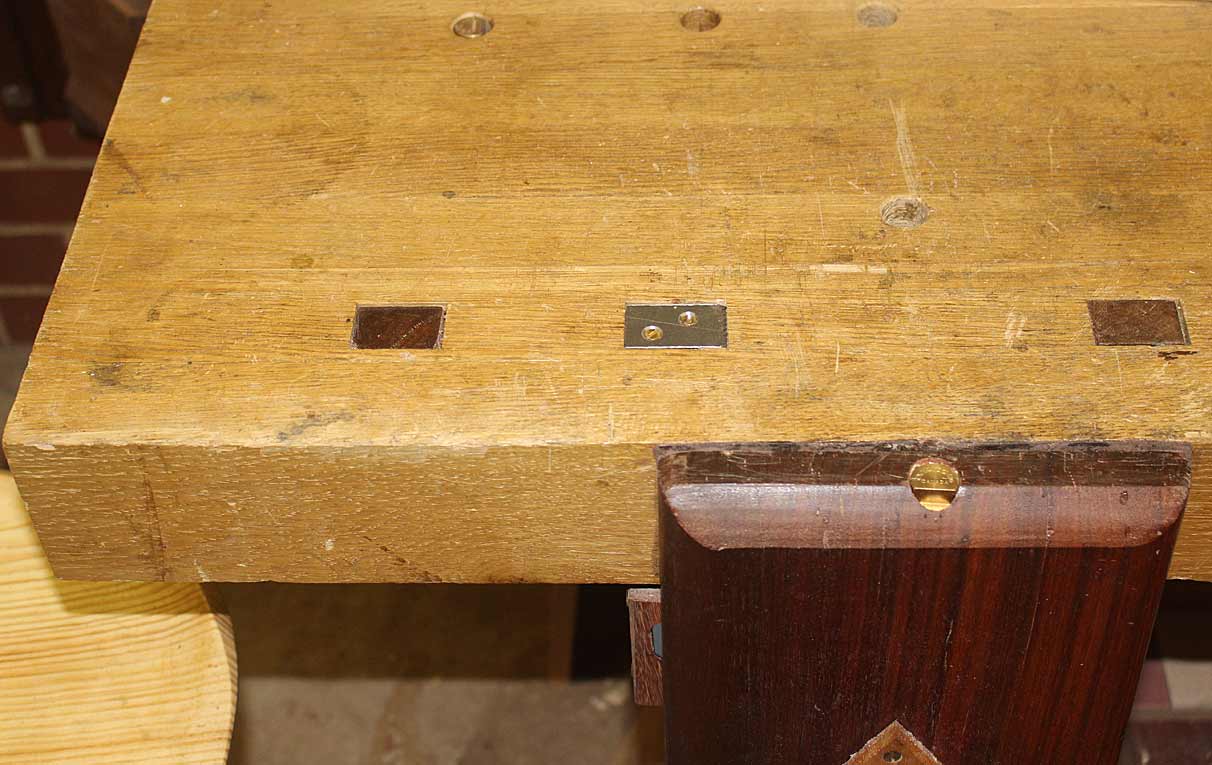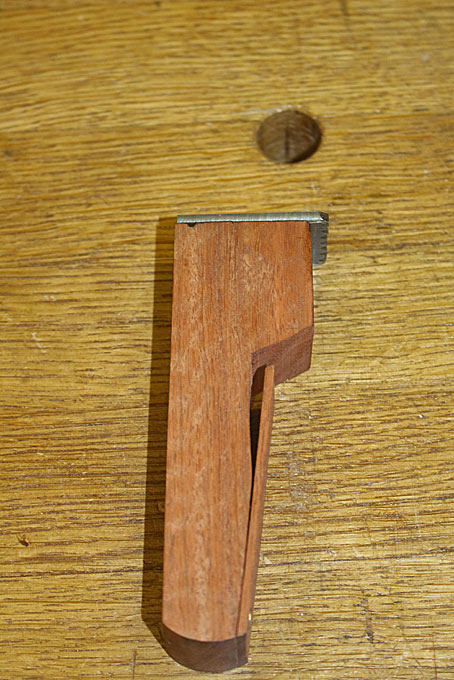This is the last part of the build - completing of the drawer bottoms and pulls.
A panel was prepared some weeks ago. 1/4" thick Tasmanian Oak. This was made up of two, book matched boards. Blue tape was used to pull the jointed edges together. Clamps are unnecessary for this task ...
Measure off the full width of the drawer bottom from inside the slips ...
Of possible interest is the work holding for the drawer bottom ...
The bench dogs on each side were made from sections of unhardened O1 steel, and filed into teeth.
Another heads-up is the arm for this cutting guard. Some while back, Veritas brought out a gauge with a fine adjuster. They now sell the arms to upgrade existing gauges, which is what I have done here to a wheel gauge I made ...
Here the tongue is marked (about 4mm). This will fit into the groove in the slip.
The thickness of the tongue is marked (3mm).
The tongue is planed ...
The fit is tested with a spare slip ...
The bottom was about 1mm too wide to fit. A LN edge was perfect to re-joint one side ...
Re-establish the tongue with a shoulder plane ...
Slide the bottom in. At this time it is just a dry fit. The front, which remains 1/4" thick to fit to 1/4" groove at the rear of the drawer front, is not yet pushed home. The front groove will hold the one end firmly, allowing movement towards the rear of the drawer.
















 Reply With Quote
Reply With Quote


















